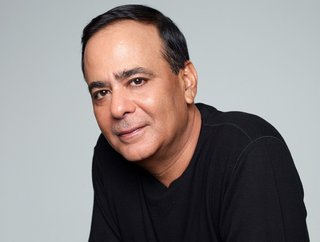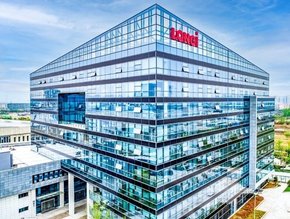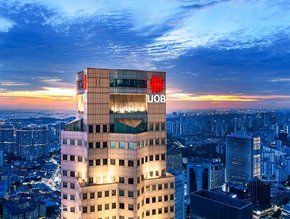Nirvik Singh, COO Grey Group on adding colour to campaigns

From Coca-Cola to Volvo, Pringles to Pantene, Pfizer to Carlsberg, some of the world’s most iconic brands rely on global advertising and marketing agency Grey Group to get their message across in an eye-catching and memorable fashion. When a story needs bringing to life, Grey is there to add the necessary narrative and all-important colour.
Founded in New York in 1917, Grey Group now has 40 studios across 29 countries, and serves 20% of the Fortune 500. Regularly named Agency of the Year and the recipient of countless Effie awards (the Oscars of the creative industry) – including more than 60 just this year – it’s easy to appreciate the scale of the role facing Nirvik Singh as Global COO and President International, with a remit that extends from Latin America to Europe, the Middle East and Africa to Asia Pacific.
So just how does he manage?
“The infinite diversity one finds across the region, from Tokyo to Sydney to Mumbai and Dubai and down to Johannesburg, is a constant source of inspiration” says Nirvik, talking exclusively to Business Chief.
“The potent combination of exceptional talent, deep cultural insights and how the team collaborates has proven incredibly fruitful. We are undoubtedly in a competitive industry, and my role is to mentor our leadership, provide support, harness all the resources available, and ensure optimal chemistry with our clients. I can't do it alone – fortunately, I am surrounded by motivated and resilient people who know how to deliver.”
Nirvik began his career with Lipton India, a Unilever company. He then joined Trikaya Advertising (which later became Grey India) as head of the Kolkata office at age 26. Under his leadership, the agency grew quickly, and also produced ground-breaking campaigns that saw it win Agency of the Year four years in a row.
Then as head of Grey Group India, Nirvik led its transformation to a total communications company, extending its footprint across the country. Over the next 20 years, Nirvik continued to rise rapidly through the international ranks.
“In 1997, at the age of 33, I was appointed CEO of Grey India. My remit was then expanded to CEO Grey South Asia, and in 2009, I was made Chairman & CEO Grey Asia Pacific,” recalls Nirvik. “This role was a game-changer for me, and it opened my eyes and gave me a vision of what could be achieved in the region for the growth of our clients' businesses and our agency.
“It was my first time leading teams based across numerous countries and on a spectrum of very different cultures. In that period, we also made many acquisitions that helped our strategy of becoming a total communications company.
“In 2016, the Middle East and Africa also came under my purview. To manage this successfully was a challenge but one that I relished. You gain incredible insights that you can only get by spending time with clients and working closely with your teams from across the region, and it makes you open to understanding why things are done in a certain way.
“You appreciate that every country has its own personality, customs and cultural nuances. We continued to deliver against our North Star of ‘Famously Effective’. Grey became known as a leading creative powerhouse thanks to iconic award-winning campaigns such as The Barber Girls of India, Your Plastic Diet, #PrideHair, Living Seawall, #Friendshit, and Project AgroBanking, to name a few.”
Nirvik took the role of Global COO Grey Group and Chairman & CEO Asia Pacific Middle East and Africa (AMEA) in 2019, before his scope was extended further in 2021 to his current position.
As Global COO, his role is to ensure efficiency in business operations and to develop strategies to keep innovating and improving management practices. The President International aspect means taking a deeper dive and working closely to support the leadership teams in the individual countries.
“Over the years, our business has changed the most – from broadcast to narrowcast to personalisation, social media platforms, e-commerce, a completely fragmented media landscape and now AI,” says Nirvik.
“My role is to keep up with these ever-evolving changes – understand our clients' needs, and see what we can offer creatively as the best solutions. Different geographies are at different points in this journey, so you cannot have a one-size-fits-all strategy – that requires a deep understanding of each region and country.
“The other important aspect of my role is to endeavour to be the employer of choice. That comes with creating a culture where diversity, equality and meritocracy are celebrated.”
Proof of this is evident with Grey Group recently included in Newsweek’s inaugural rankings for the Top 100 Global Most Loved Workplaces list – lauded for its diverse culture including impressive gender balance, with women comprising more than 50% of global staff and nearly 40% of leadership roles.
This includes CEO Laura Maness, who became the first female Global CEO of Grey Group in July 2022 and was recently named Creative Leader of the Year at the prestigious Creativepool Awards.
Innovating to stay Famously Effective
As Global COO, Nirvik has enhanced the agile creative process at Grey by introducing innovative solutions including the `borderless integrated marketing’ model and an internal, collaborative tech platform. This has fostered a culture of innovation and delivered more creative, diverse campaigns for clients. These also chimed with the company slogan – Famously Effective.
The borderless integrated marketing model concept was launched just before the COVID-19 pandemic, and really proved its value during that turbulent time.
Nirvik says most organisations work in silos – either by department or by geography – and the idea was to offer Grey’s greatest talents to clients irrespective of departments or geographies.
The model was a hit with both clients and Grey’s own people, who were exposed to working on projects across the globe.
“It kills the preconceived notion that creativity requires 24-7 proximity with both location and culture,” says Nirvik. “We believe the collision of differences ignites the spark that fuels breakthrough ideas. It widens your horizon. Working with people across geographies allows us to see fresh cultural perspectives and adds a much broader palette of expertise from a multitude of our studios.”
Perhaps more transformative, and timely, was the launch of GO.GREY.com – the single database for all Grey creatives. The agency was already working to become more collaborative and the onset of the pandemic only accelerated that shift out of necessity.
“For creative agencies, the people and their talent and ambition make the difference,” says Nirvik.
“Go.Grey has changed the way we communicate, share, collaborate and work with each other. Now, across our network, we have access to every person, deck, campaign, intellectual property and published work from around the globe – at our fingertips.
“It has made us agile and efficient and helped us to adapt to working in a borderless way. It is now a big part of Grey culture and has proved to be a highly effective platform during challenging times. Add emerging technologies to the mix, and the process can be turbocharged and save an immense amount of unnecessary work and time that can be applied to add value to clients instead.”
AI will enhance human creativity, not replace it
It does not take long these days for talk to turn to emerging technologies, and one in particular – artificial intelligence. Rewind just over a year ago and most commentators believed that blue-collar jobs would be the ones most under threat from AI. But then in November 2022, ChatGPT happened, the generative AI genie was let out of the lamp, and suddenly those in the creative industries were seemingly first in the firing line.
Nirvik has been in the industry longer than most, and he remains upbeat on the potential for AI to enhance rather than replace human creativity.
“We rely on insightful, visionary and imaginative people who instinctively know how to reach an audience. Technology merely assists in bringing our visions to life,” he says.
“Innovative technologies find their feet fastest in creative cultures that already embrace innovation, and AI can bridge the gap in a world where time and creativity are often at odds. However, the human element is essential in leveraging and getting the most out of AI. The quality of data matters, and what output is delivered depends on decisions that humans will make.
“There are still tough questions surrounding AI-produced work, particularly with deepfakes, copyright and origin issues. It's our job to build trust for brands, and we can't underestimate how much AI will change the way people perceive the content they view. That's why our focus will be on using AI tools to enhance human-led creativity, not to replace it.”
Grey Group’s 100-year history
When you are an agency with more than 100 years of heritage, you could be perceived as being part of the establishment, or the ‘old school’. In fast-moving times, and with the media landscape shifting, is that history a benefit or a hindrance to Grey Group?
Nirvik believes it is down to “trusting our muscle memory and collective experience”. He says being curious and having wide-eyed ambition to never stop learning about the world helps the agency to lean into innovation.
“Something I said a few years ago still holds for me – tech, digital, and AI are all innovations everyone has access to – but what's important to remember is how to make the best use of it,” says Nirvik. “Innovation can also mean looking at and then doing things differently.”
Nirvik has also moved with the times, metaphorically and literally – shifting his base from Singapore to Dubai once the pandemic restrictions were lifted. This move makes sense when you consider his expanded remit, placing him in a strategic location with great connectivity to Asia, Africa and Europe. However, there is more to being based in Dubai than convenience.
“Dubai is a hub for technology and innovation and has quickly become a world-class start-up centre, too,” he says. “Investment has been pouring into the UAE for a few years already. It is a multicultural city, so you get to interact with clients from diverse cultures.
“You also have access to amazing talent and staff from all corners of the world, and these aspects have always appealed to me.”
Brands have never been as highly valued or immersed and engaged in popular culture and entertainment as they are today. At the same time, creative agencies are under pressure to do more with less, to modernise through AI, and to be more diverse.
However, this challenge is not what keeps Nirvik awake at night. Speaking as conflict rages in Europe and the Middle East, he points to polarisation as his biggest concern.
“The real difficulty is in finding out if what you are seeing or reading is true and what this does to kids growing up today,” he says. “We need to become a more compassionate and caring world.”
That is something we can all campaign for.






